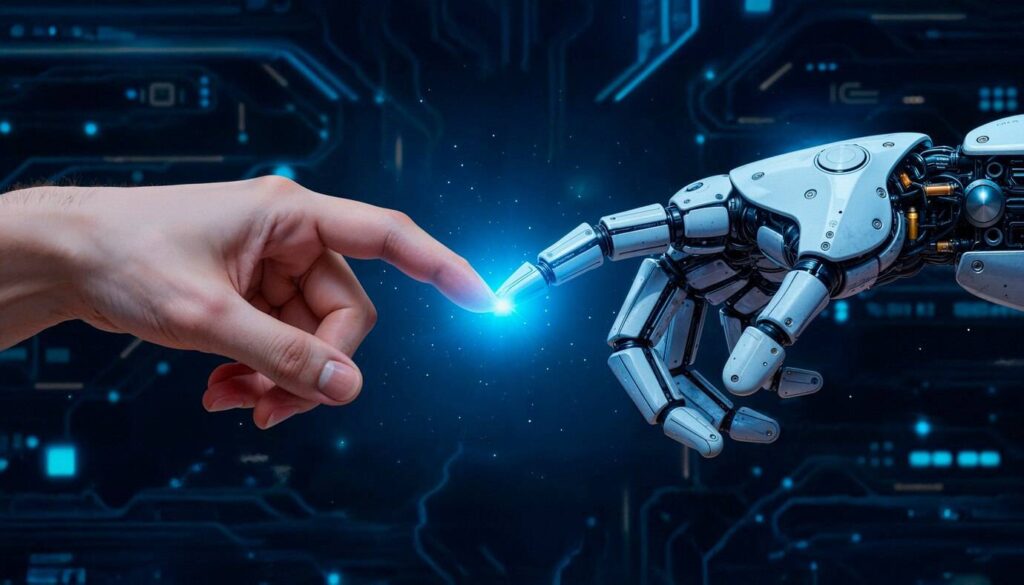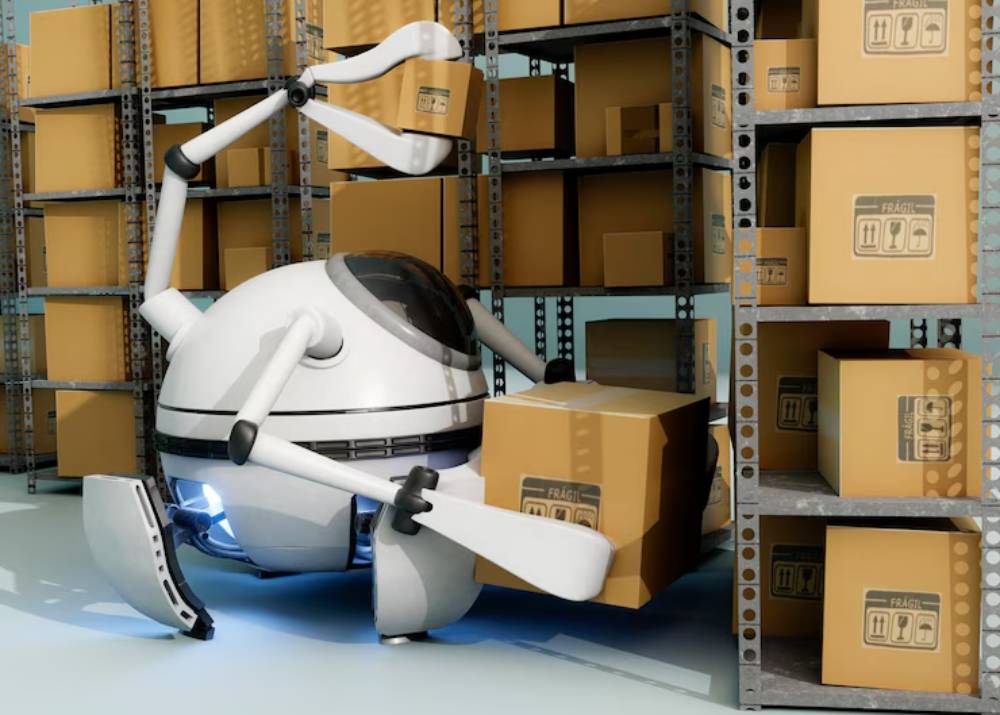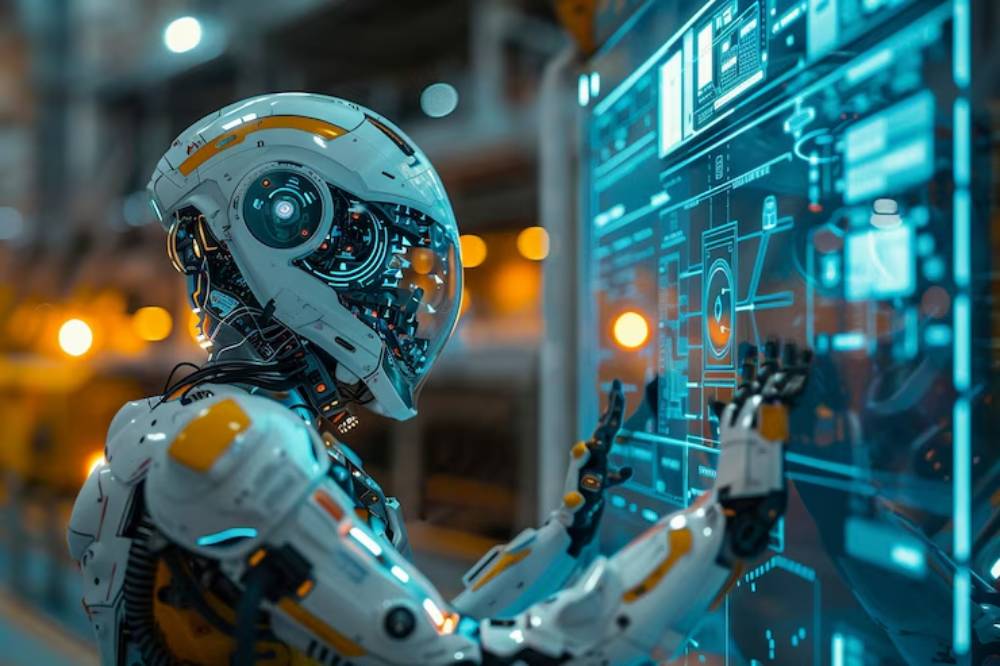The Technology Blog

How Automation is Shaping the Future of Work
Automation isn’t just a buzzword—it’s transforming the way we work. From assembly lines to office software, automation is playing a larger role in how businesses run and how people do their jobs. Whether it’s a robot assembling cars or software managing schedules, automation is now part of everyday work life.
This shift brings both opportunities and challenges. On one hand, automation can boost productivity and take over repetitive tasks. On the other, it raises questions about the future of human jobs and the skills needed to stay relevant. This blog explores how automation is reshaping work, what it means for employees, and how businesses can adapt.
What Is Workplace Automation?

Workplace automation refers to using technology to perform tasks with minimal human input. This can include anything from robotic arms in factories to algorithms that sort emails or manage inventory.
There are different levels of automation:
- Basic Automation: Simple tasks like data entry, email sorting, or reminders.
- Process Automation: Software handling end-to-end workflows, such as invoicing or payroll.
- Advanced Automation: Systems that include AI and machine learning to analyse data and make decisions.
The goal is simple: improve efficiency, reduce errors, and free up people to focus on higher-value work.
Where Automation Is Making an Impact
1. Manufacturing
Automation has been part of manufacturing for decades. Robotic arms, conveyor belts, and quality-check systems help speed up production while reducing mistakes. Modern factories now use intelligent machines that adapt to different tasks.
2. Logistics and Warehousing

In warehouses, robots move packages, sort items, and manage inventory. Automated systems in logistics improve delivery speed, track shipments in real-time, and reduce labour costs.
3. Retail
Self-checkout machines, smart shelves, and chatbots are changing how retail operates. Automation helps manage stock levels, predict demand, and offer personalised customer service.
4. Office Work
Software bots automate routine office tasks like scheduling meetings, generating reports, and organising data. This saves time and lets workers focus on creative and strategic tasks.
5. Healthcare
Automation in healthcare includes appointment scheduling, patient monitoring, and even robotic surgery. It helps reduce admin work for staff and improves patient care through accurate, real-time data.
Benefits of Automation in the Workplace
Improved Efficiency
Machines work around the clock, don’t get tired, and don’t need breaks. This results in faster processes and higher output with fewer mistakes.
Cost Savings
Over time, automation helps businesses save on labour costs and reduces waste by increasing accuracy. While initial setup costs can be high, long-term savings are significant.
Enhanced Accuracy
Automated systems follow set instructions without deviation. This means fewer errors in tasks like data entry, accounting, or production.
Increased Productivity
When repetitive tasks are automated, employees can use their time for tasks that require critical thinking, collaboration, or creativity—things machines can’t do.
The Impact on Jobs: A Changing Landscape
One of the biggest concerns about automation is job loss. It’s true that some roles, especially those based on repetition, are at risk. However, automation also creates new opportunities. The key is how workers and organisations adapt.
Jobs Likely to Be Affected
- Data entry clerks
- Cashiers
- Assembly line workers
- Telemarketers
These roles are routine and follow clear steps, making them easy to automate.
Jobs Likely to Grow
- Data analysts
- Software developers
- Robotics technicians
- Cybersecurity experts
- Healthcare workers
These roles require human judgement, creativity, or technical skills that machines can’t easily replicate.
The Rise of Hybrid Workforces
In many industries, we’re seeing a blend of human and machine collaboration. This is known as a hybrid workforce.
For example:
- Chatbots handle basic questions in customer service, while human agents tackle complex issues.
- AI analyses test results in healthcare, but doctors make the final diagnosis.
- Robots handle physical labour in manufacturing, while engineers oversee operations and maintenance.
This model allows businesses to scale while keeping a human touch where it’s needed.
Skills for the Future
Automation is changing the skillsets required in the workplace. To stay relevant, workers need to adapt and learn continuously.
In-Demand Skills Include:
- Digital literacy: Basic understanding of how to use software, apps, and digital tools.
- Analytical thinking: Ability to interpret data and draw conclusions.
- Creativity and innovation: Coming up with new ideas and solutions.
- Adaptability: Willingness to learn and take on new tasks as technology evolves.
- Emotional intelligence: Skills like empathy, communication, and leadership, which are uniquely human.
Governments, educational institutions, and businesses need to work together to offer training and reskilling programs that prepare workers for this shift.
Challenges to Consider
1. Transition Costs
Adopting automation technology can be expensive. Small businesses may struggle with the investment needed for software or robotics.
2. Job Displacement
As roles become automated, some workers may lose their jobs. It’s essential to have support systems in place, such as retraining or job placement services.
3. Ethical Concerns
Automation raises ethical questions around surveillance, bias in AI, and privacy. Companies must ensure technology is used responsibly and transparently.
4. Overreliance on Technology
Too much dependence on automation can be risky. Systems can fail or be hacked. It’s important to have human oversight and backups in place.
Automation and the Role of AI

Artificial Intelligence (AI) plays a big part in workplace automation. AI can process huge amounts of data, learn from patterns, and make decisions. This opens up new possibilities, such as:
- Predicting customer needs
- Automating marketing campaigns
- Streamlining recruitment through CV scanning
- Managing supply chains more efficiently
However, AI isn’t perfect. It needs clean data, constant updates, and human supervision to avoid errors or unfair decisions.
A Look Into the Future
The future of work won’t be machines replacing humans—it will be machines working with humans. Expect to see more tools that make jobs easier, faster, and more engaging. Automation will take care of the boring tasks. Meanwhile, humans will focus on the creative, emotional, and strategic aspects.
Businesses that invest in both technology and people will have a major advantage. Workers who embrace change and stay curious will thrive in this new world.
Conclusion: Embracing the Shift
Automation is not the end of work—it’s a transformation. It’s reshaping job roles, redefining how we measure productivity, and opening the door to new kinds of careers. While change can be unsettling, it also brings new possibilities.
The future is a canvas painted by those who adapt. Employers and employees alike must embrace this moment. Dive deep into fresh tools, cultivate new skills, and brace yourself. Automation will flourish, but the human touch will reign supreme in the workplace.









